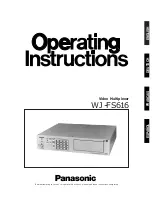
www.raisecom.com
User Manual
22
Appendix B FAQ
For some problems you may meet during installation and operation, please try to solve them
following the suggestions below. For the problems can not be solved using the following suggestions,
please contact with Raisecom or our distributors for technical support.
¾
The power supply indicator PWR (green) wouldn’t turn ON.
Please check whether the power supply cable of the device is well connected and whether the
power supply switch has been turned on.
¾
The optical interface LOS indicator (red) turns ON.
This indicates that loss of receiving signal (LOS) alarm occurs at the optical interface.
Firstly, please check whether the fiber is well connected to the optical interface.
Secondly, please form a self loop using the fiber (may need attenuation). If the alarm still
exists, please replace the fiber and again form a self loop using the new fiber. If the optical
interface LOS indicator is still ON, there is problem with the device.
¾
The optical interface LOF indicator (red) turns ON.
Loss of frame alarm of the receiving signal at the optical interface occurs. Optical signal has
been received, but the optical power may be around the critical receiving sensitivity. Please
measure the receiving optical power and make sure that the TX interface of the optical
interface of the remote device has been well connected.
¾
Optical interface indicator E-3 (red) turns ON.
The bit error rate of the receiving signal at the optical interface exceeds 1E-3. Please check
whether the optical interface has been well connected and please measure the receiving
optical power as well.
¾
Optical interface indicator E-6 (yellow) turns ON.
The bit error rate of the receiving signal at the optical interface exceeds 1E-6. The E-6 alarm
may occur when the device is just electrified. This is a normal phenomenon and will last at
most 10 seconds before the E-6 indicator turns OFF. If the E-6 alarm occurs during the
normal operation of the device, please check whether the optical interface is well connected
and please measure the optical power.
¾
Communication failed on the E1 line
Please check whether the E1 cables and the fiber are well connected, and check the status of
the E1-LOS indicators on the front panel of the device. At the same time, please check the
loopback function set by the DIP switch E1-LOOP and Bit 4 of the DIP switch SEL (please
refer to Chapter 4) and locate the problem.
¾
The E1 interface LOS (red) indicator turns ON.
E1 LOS alarm indicates lost of receiving signals at the E1 interface. There is no HDB3 code
input.
Please check whether the E1 cable has been connected properly, and whether the TX and RX
of the BNC cable are correctly connected.


































